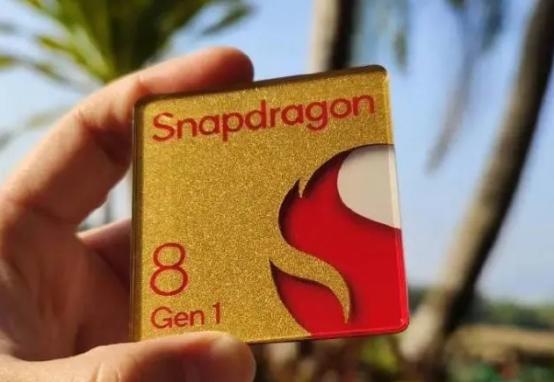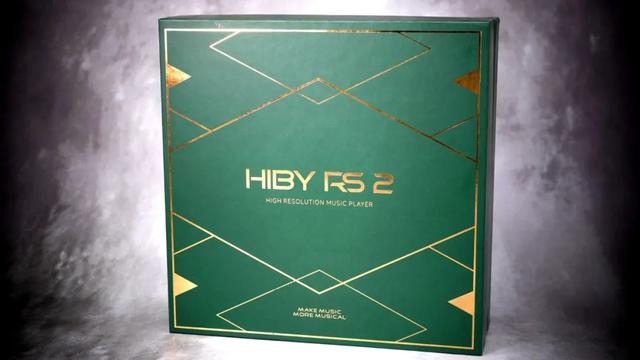状态同步技术分享(实时单人姿态估计)
本文介绍了如何使用 TensorFlow 在智能机上(包括安卓和 iOS 设备)执行实时单人姿态估计。GitHub 地址:https://github.com/edvardHua/PoseEstimationForMobile
该 repo 使用 TensorFlow 实现 CPM 和 Hourglass 模型。这里未使用常规的卷积,而是在模型内部使用了反向卷积(又叫 Mobilenet V2),以便执行实时推断。
注:你可以修改网络架构,来训练更高 PCKh 的模型。架构地址:https://github.com/edvardHua/PoseEstimationForMobile/tree/master/training/src
该库包含:
- 训练 CPM 和 Hourglass 模型的代码;
- 安卓 demo 的源代码;
- IOS demo 的源代码。
下面的 gif 是在 Mi Mix2s 上截取的(~60 FPS)
你可以下载以下 apk,在自己的设备上进行测试。
- PoseEstimation-Mace.apk:https://raw.githubusercontent.com/edvardHua/PoseEstimationForMobile/master/release/PoseEstimation-Mace.apk
- PoseEstimation-TFlite.apk:https://raw.githubusercontent.com/edvardHua/PoseEstimationForMobile/master/release/PoseEstimation-TFlite.apk
训练
依赖项
- Python3
- TensorFlow >= 1.4
- Mace
数据集
训练数据集:https://drive.google.com/open?id=1zahjQWhuKIYWRRI2ZlHzn65Ug_jIiC4l
将其解压缩,获取以下文件结构:
# root @ ubuntu in ~/hdd/ai_challenger $ tree -L 1 .. ├── ai_challenger_train.json ├── ai_challenger_valid.json ├── train └── valid
该训练数据集仅包含单人图像,数据来源是 AI Challenger 竞赛。共包含 22446 个训练样本和 1500 个测试样本。
该 repo 作者使用 tf-pose-estimation 库中的数据增强代码将标注迁移为 COCO 格式。tf-pose-estimation 库:https://github.com/ildoonet/tf-pose-estimation
超参数
训练步骤中,使用 experiments 文件夹中的 cfg 文件传输超参数。
以下是 mv2_cpm.cfg 文件的内容:
[Train] model: 'mv2_cpm' checkpoint: False datapath: '/root/hdd/ai_challenger' imgpath: '/root/hdd/' visible_devices: '0, 1, 2' multiprocessing_num: 8 max_epoch: 1000 lr: '0.001' batchsize: 5 decay_rate: 0.95 input_width: 192 input_height: 192 n_kpoints: 14 scale: 2 modelpath: '/root/hdd/trained/mv2_cpm/models' logpath: '/root/hdd/trained/mv2_cpm/log' num_train_samples: 20000 per_update_tensorboard_step: 500 per_saved_model_step: 2000 pred_image_on_tensorboard: True
该 cfg 文件覆盖模型的所有参数,在 network_mv2_cpm.py 中仍有一些参数。
使用 nvidia-docker 训练
通过以下命令构建 docker:
cd training/docker docker build -t single-pose .
或者
docker pull edvardhua/single-pose
然后运行以下命令,训练模型:
nvidia-docker run -it -d \ -v <dataset_path>:/data5 -v <training_code_path>/training:/workspace \ -p 6006:6006 -e LOG_PATH=/root/hdd/trained/mv2_cpm/log \ -e PARAMETERS_FILE=experiments/mv2_cpm.cfg edvardhua/single-pose
此外,它还在 port 6006 上创建了 tensorboard。确保安装了 nvidia-docker。
按一般方法训练
1. 安装依赖项:
cd training pip3 install -r requirements.txt
还需要安装 cocoapi (https://github.com/cocodataset/cocoapi)。
2. 编辑 experiments 文件夹中的参数文件,它包含几乎所有超参数和训练中需要定义的其他配置。之后,传输参数文件,开始训练:
cd training python3 src/train.py experiments/mv2_cpm.cfg
在 3 张英伟达 1080Ti 显卡上经过 12 个小时的训练后,该模型几乎收敛。以下是对应的 tensorboard 图。
基准(PCKh)
运行以下命令,评估 PCKh 值。
python3 src/benchmark.py --frozen_pb_path=hourglass/model-360000.pb \ --anno_json_path=/root/hdd/ai_challenger/ai_challenger_valid.json \ --img_path=/root/hdd \ --output_node_name=hourglass_out_3
预训练模型
- CPM:https://github.com/edvardHua/PoseEstimationForMobile/tree/master/release/cpm_model
- Hourglass:https://github.com/edvardHua/PoseEstimationForMobile/tree/master/release/hourglass_model
安卓 demo
由于 mace 框架,你可以使用 GPU 在安卓智能机上运行该模型。
按照以下命令将模型转换为 mace 格式:
cd <your-mace-path># You transer hourglass or cpm model by changing `yml` file. python tools/converter.py convert --config=<PoseEstimationForMobilePath>/release/mace_ymls/cpm.yml
然后根据 mace 文档的说明,将模型集成到安卓设备中。
至于如何调用模型、解析输出,可以参见安卓源代码:https://github.com/edvardHua/PoseEstimationForMobile/tree/master/android_demo。
一些芯片的平均推断时间基准如下所示:
以下是该 repo 作者构建该 demo 的环境:
- 操作系统:macOS 10.13.6(mace 目前不支持 windows)
- Android Studio:3.0.1
- NDK 版本:r16
在构建 mace-demo 时,不同环境可能会遇到不同的错误。为避免这种情况,作者建议使用 docker。
docker pull registry.cn-hangzhou.aliyuncs.com/xiaomimace/mace-dev-lite docker run -it --privileged -d --name mace-dev --net=host -v to/you/path/PoseEstimationForMobile/android_demo/demo_mace:/demo_mace registry.cn-hangzhou.aliyuncs.com/xiaomimace/mace-dev-lite docker run -it --privileged -d --name mace-dev --net=host \ -v to/you/path/PoseEstimationForMobile/android_demo/demo_mace:/demo_mace \ registry.cn-hangzhou.aliyuncs.com/xiaomimace/mace-dev-lite # Enter to docker docker exec -it mace-dev bash # Exec command inside the dockercd /demo_mace && ./gradlew build
或者将模型转换为 tflite:
# Convert to frozen pb.cd training python3 src/gen_frozen_pb.py \ --checkpoint=<you_training_model_path>/model-xxx --output_graph=<you_output_model_path>/model-xxx.pb \ --size=192 --model=mv2_cpm_2 # If you update tensorflow to 1.9, run following command. python3 src/gen_tflite_coreml.py \ --frozen_pb=forzen_graph.pb \ --input_node_name='image' \ --output_node_name='Convolutional_Pose_Machine/stage_5_out' \ --output_path='./' \ --type=tflite # Convert to tflite.# See https://github.com/tensorflow/tensorflow/blob/master/tensorflow/docs_src/mobile/tflite/devguide.md for more information. bazel-bin/tensorflow/contrib/lite/toco/toco \ --input_file=<you_output_model_path>/model-xxx.pb \ --output_file=<you_output_tflite_model_path>/mv2-cpm.tflite \ --input_format=TENSORFLOW_GRAPHDEF --output_format=TFLITE \ --inference_type=FLOAT \ --input_shape="1,192,192,3" \ --input_array='image' \ --output_array='Convolutional_Pose_Machine/stage_5_out'
然后,将 tflite 文件放在 android_demo/app/src/main/assets 中,修改 ImageClassifierFloatInception.kt 中的参数。
............// parameters need to modify in ImageClassifierFloatInception.kt/** * Create ImageClassifierFloatInception instance * * @param imageSizeX Get the image size along the x axis. * @param imageSizeY Get the image size along the y axis. * @param outputW The output width of model * @param outputH The output height of model * @param modelPath Get the name of the model file stored in Assets. * @param numBytesPerChannel Get the number of bytes that is used to store a single * color channel value. */ fun create( activity: Activity, imageSizeX: Int = 192, imageSizeY: Int = 192, outputW: Int = 96, outputH: Int = 96, modelPath: String = "mv2-cpm.tflite", numBytesPerChannel: Int = 4 ): ImageClassifierFloatInception = ImageClassifierFloatInception( activity, imageSizeX, imageSizeY, outputW, outputH, modelPath, numBytesPerChannel)............
最后,将该项目导入 Android Studio,在智能机设备上运行。
iOS Demo
首先,将模型转换为 CoreML 模型:
# Convert to frozen pb.cd training python3 src/gen_frozen_pb.py \ --checkpoint=<you_training_model_path>/model-xxx --output_graph=<you_output_model_path>/model-xxx.pb \ --size=192 --model=mv2_cpm_2 # Run the following command to get mlmodel python3 src/gen_tflite_coreml.py \ --frozen_pb=forzen_graph.pb \ --input_node_name='image' \ --output_node_name='Convolutional_Pose_Machine/stage_5_out' \ --output_path='./' \ --type=coreml
然后,按照 PoseEstimation-CoreML 中的说明来操作(https://github.com/tucan9389/PoseEstimation-CoreML)。
,
免责声明:本文仅代表文章作者的个人观点,与本站无关。其原创性、真实性以及文中陈述文字和内容未经本站证实,对本文以及其中全部或者部分内容文字的真实性、完整性和原创性本站不作任何保证或承诺,请读者仅作参考,并自行核实相关内容。文章投诉邮箱:anhduc.ph@yahoo.com











